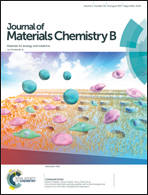Effects of HAp and TCP in constructing tissue engineering scaffolds for bone repair
Abstract
In recent years, hydroxyapatite (HAp) and β-tricalcium phosphate (TCP) were extensively used to prepare composite scaffolds for bone repair. However, due to a lack of systematical evaluation of HAp and TCP composite scaffolds for bone repair, their distinctions on bone regeneration in vivo have not been clearly clarified to date. In this study, we constructed HAp and TCP composite poly(lactic-co-glycolic acid) (PLGA) scaffolds with the same contents of HAp and TCP and similar structures and porosities, and systematically investigated their performance in the repair of rabbits’ calvarial bone defects. The HAp/PLGA scaffold possessed stronger mechanical property and higher cell proliferation than the TCP/PLGA scaffold, endowing it with better performance of bone regeneration at an early stage. Since TCP could greatly neutralize degraded acidic products and be slowly absorbed in vivo to release occupied room for new bone growth compared to HAp, the TCP/PLGA scaffold yielded more intact new bone for long-term repair of the defects. Our results clearly demonstrate that TCP is a superior bioceramic for bone tissue engineering, showing promise for the perfect repair of bone defects via tissue engineering.



 Please wait while we load your content...
Please wait while we load your content...